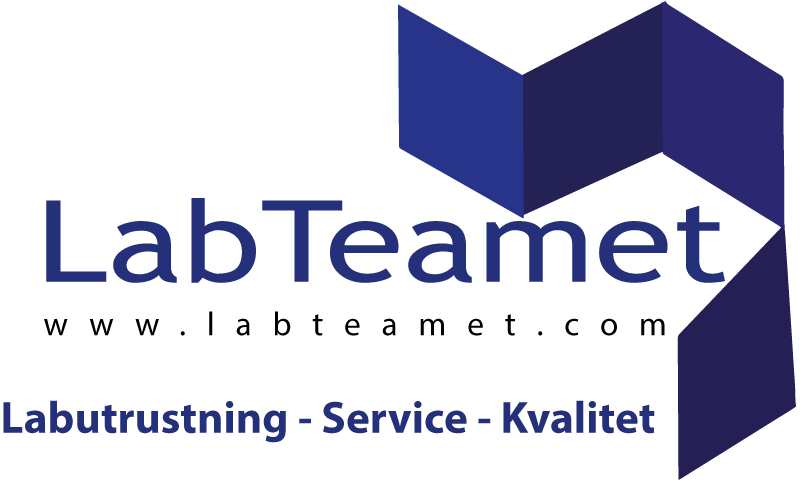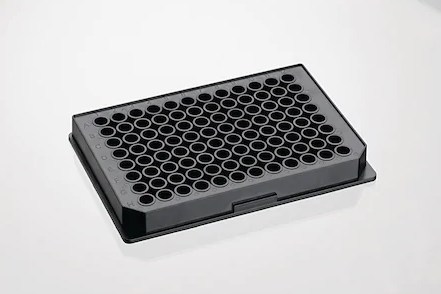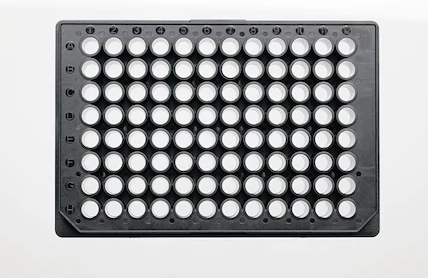The black Eppendorf Microplates are ideal for fluorescence detection. An excellent signal-to-noise ratio provides low detection limits in assays – for clear signals even with low-concentration samples! The white Eppendorf Microplates maximize reflection for high sensitivity during detection of luminescence or weak fluorescence signals.
Superior signal-to-noise ratio
Minimized autofluorescence and autoluminescence results in higher quality of results. Example (see also image): Fluorescence assay with Eppendorf black assay plate. Comparison of the signal-to-noise ratio in a DNA quantification using the fluorescent dye PicoGreen®. Black Eppendorf® Microplates and black microplates of other manufacturers were used. PP = polypropylene, PS = polystyrene.
For more information see:
“Application Note 203: Eppendorf Polypropylene Microplates – Highest sensitivity for fluorescence measurements in black plates.
” Application Note 215: Performance evaluation of white Eppendorf Polypropylene Microplates using the Promega CellTiter-Glo® Luminescent Assay.
Eppendorf Microplate UV-VIS
features an ultrathin film bottom. This ensures an excellent light transmission in the UV range. For more information see Application Note 203: Factor based quantification of nucleic acid concentrations in the Eppendorf PlateReader AF2200 using the Eppendorf Microplate UV-VIS.
The solid black and white assay plates
are made of polypropylene. Resulting in high resistance to chemicals, mechanical stress and temperature extremes.

































